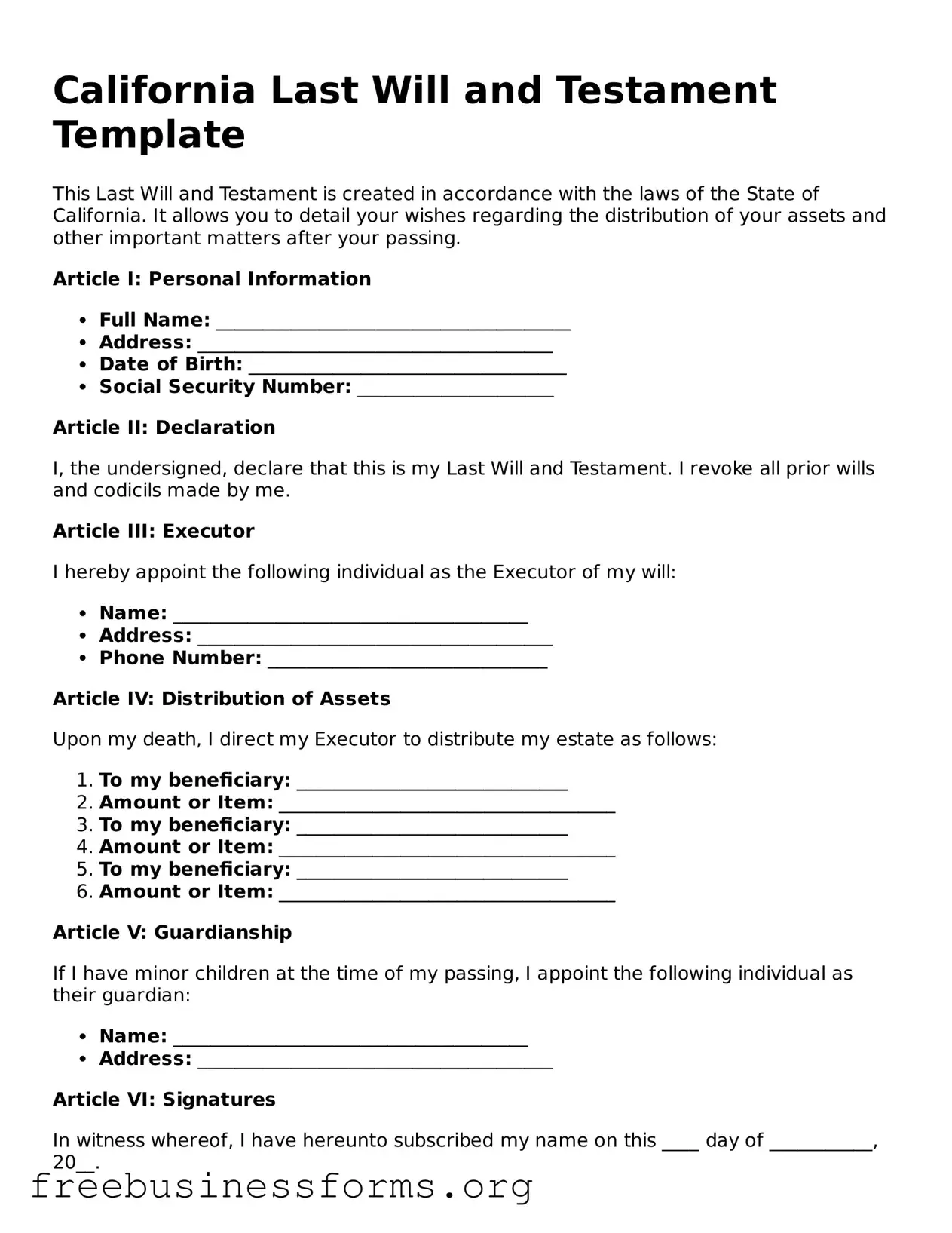California Last Will and Testament Template
This Last Will and Testament is created in accordance with the laws of the State of California. It allows you to detail your wishes regarding the distribution of your assets and other important matters after your passing.
Article I: Personal Information
- Full Name: ______________________________________
- Address: ______________________________________
- Date of Birth: __________________________________
- Social Security Number: _____________________
Article II: Declaration
I, the undersigned, declare that this is my Last Will and Testament. I revoke all prior wills and codicils made by me.
Article III: Executor
I hereby appoint the following individual as the Executor of my will:
- Name: ______________________________________
- Address: ______________________________________
- Phone Number: ______________________________
Article IV: Distribution of Assets
Upon my death, I direct my Executor to distribute my estate as follows:
- To my beneficiary: _____________________________
- Amount or Item: ____________________________________
- To my beneficiary: _____________________________
- Amount or Item: ____________________________________
- To my beneficiary: _____________________________
- Amount or Item: ____________________________________
Article V: Guardianship
If I have minor children at the time of my passing, I appoint the following individual as their guardian:
- Name: ______________________________________
- Address: ______________________________________
Article VI: Signatures
In witness whereof, I have hereunto subscribed my name on this ____ day of ___________, 20__.
Signature: ________________________________
Witnesses:
We, the undersigned witnesses, declare that the testator has signed this Last Will and Testament in our presence, and that we have witnessed the signing thereof:
- Witness 1 Name: ___________________________
- Witness 1 Signature: _______________________ Date: ___________
- Witness 2 Name: ___________________________
- Witness 2 Signature: _______________________ Date: ___________
This template provides a framework, but remember that it’s essential to consider legal advice to ensure that your will fulfills your wishes effectively and complies with state laws.
